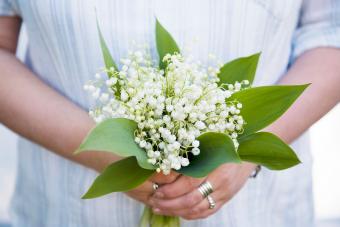
A a kind of mushroom (technically, the fruiting body of a fungus) which is coveted by chefs for its rich, earthy, woody taste. These mushrooms are very picky about where they grow, only taking up residence underground and under very specific conditions. Ounce for ounce, they are the one of the foods in the world.
Finding Truffles
Generally, only two kinds of truffles are hunted and prized in the culinary world: white truffles and black truffles. These both grow in similar circumstances (underground, around tree roots, in neutral or alkaline soil), but they are each different from one another. The truffle is a seasonal fungus with varying growth patterns depending on the variety of truffle and its native country.
In addition to being picky about where they grow, they cannot be seen on the surface of the soil with the naked eye. A trained animal is required to find truffles. Traditionally, for centuries, this animal was a pig; today, it is often a dog as pigs have a bad habit of eating the truffles they find until the animal's handler can stop it.
The Black Truffle

Black truffles (Tuber melanosporum) are slightly easier to find than their white counterparts, though still a challenge. They have a symbiotic relationship with oak trees found in Perigord, in the southwestern region of France, though they are sometimes also found in , Italy ( especially), , and .
Black truffles need to be protected from extreme summer heat or extreme winter cold. They can be damaged if frost gets too deep into the soil in which they grow. Their harvest season is relatively short and they can only be found from September through December.
The White Truffle
The white truffle (Tuber magnatum) - the "trifola d'Alba Madonna" or "Truffle of the White Mother" - is less commonly available than the black truffle, and generally grows in the of northern Italy. They are also grown in Le Marche (in northeastern Italy) and commercialized heavily there, including . Some regions in central Italy, including Molise, Abruzzo and parts of Tuscany also produce some white truffles. Even some parts of nearby .
White truffles are traditionally found in calcareous (mineral-rich, lime) soil around the roots of oak, beech, and hazel trees in temperate climates. These Italian truffles see most of their growth from December 1st to the end of January.
Other Truffle Types
While white and black might be the most commonly sought, there are other types people hunt.
- The (Tuber borchii) is found in Tuscany, Abruzzo, Romagna, Umbria, Marche, and Molise and is considered fine, but much less aromatic than the true white truffle with garlicky notes.
- The (Tuber himalayensis) is found in the Himalayan region of Tibet, bordering Yunnan and Sichuan. It is readily exported to the United States in place of more expensive truffles. Though not on par with the white and black truffles in France and Italy, some chefs find them usable. Experts often say that these are bland compared to true truffles and that they have a chemical odor. Some unscrupulous sellers will sell these less expensive Chinese truffles at the full price of the Perigord black truffle.

- The (Tuber aestivum) is also a kind of black truffle found in Northern Italy and in parts of the United Kingdom, though its more pungent taste and texture are considered less desirable than the true truffles. It is found from May to August and is generally found under trees where there is no other surface plant life to be seen.
- Found in central Italy, (Tuber macrosporum) are dark-colored, relatively smooth truffles with a strong garlic odor. They have also recently been .
- Additionally, there are several respected species found in the including the Oregon black truffle, the Oregon spring white truffle, the Oregon winter white truffle, and the Oregon brown truffle. Some chefs are beginning to come around and consider these truffles, especially the rare Oregon brown truffle, a delicacy. Many of these are found on Douglas Fir trees.
- The (Tuber lyonii) is sometimes found growing under the pecan tree in the southern United States. These are often found by farmers on the roots of trees on pecan farms.
General Growing Conditions
Truffles, simply put, are very hard to find and harvest. This rarity is the main reason for the high price tag that they carry. Truffles only grow underground, forming a symbiotic relationship with the trees whose roots they grow near. They prefer beech, birch, hazel, hornbeam, oak, pine, and poplar trees. The tends to be well-drained soil that is higher alkaline (around 7 or 8.5 Ph). They are generally found about 30 centimeters or less below the surface of the soil.
Cultivating the Truffle
Truffles have been hunted for centuries in the old-fashioned way, though some farmers are experimenting with cultivating truffles. This is proving possible, but a challenge and a matter of much experimentation and failure.
Because of the gourmet nature and extremely high price point of truffles, people are often trying to break into or hunting. To try and save on labor and the uncertainty that comes with harvesting, enterprising farmers are trying to grow them on farm land, in backyards, or in basements. Due to the symbiotic nature of the truffle and its tree, however, this is proving to be extremely difficult. However, are growing introduced black truffles and there have been attempts to as well, to varying degrees of success.
The Gourmet Truffle
If an earthy, musky, mushroomy smell and taste sound just right, then a few shavings of truffles on a dish could elevate the quality from great to unmatched. But since truffles are currently quite expensive ( of black truffles and of white truffles) and mass farming attempts for them have not been overly successful, be prepared to pay top dollar for this fungus for the foreseeable future.







